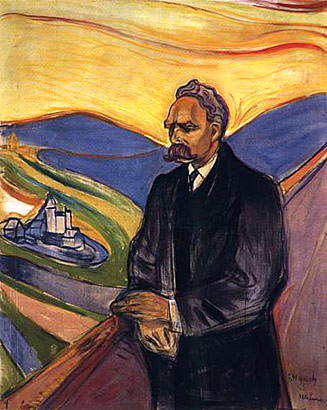Fernando Botero: Master of Volume and Proportion
Fernando Botero, a Colombian artist renowned for his distinctive style characterized by exaggerated volume and proportion, has made an indelible mark on the art world. His works, often referred to as "Boterismo," depict figures and objects in an inflated, almost comical manner, yet they carry deep social and political commentary. Born in Medellín, Colombia, in 1932, Botero's journey to becoming one of the most recognizable artists of the 20th and 21st centuries is as vibrant and expansive as his art.
Early Life and Influences
Fernando Botero's fascination with art began at a young age. His early works were influenced by pre-Columbian and Spanish colonial art, as well as the Baroque style, which he encountered through religious paintings in churches. Botero's formal art education began at the age of 16, when he attended a school for matadors in Medellín, an experience that would later influence his bullfighting series. Despite this early training in a seemingly unrelated field, his passion for painting remained steadfast.
In 1952, Botero left Colombia to study in Europe. He spent time in Madrid, where he studied at the Academia de San Fernando and copied works by Francisco de Goya and Diego Velázquez at the Prado Museum. This period was crucial for his development as an artist, providing him with a solid foundation in classical techniques and exposure to European masters.
Evolution of Style
Botero's signature style emerged during the late 1950s. It was a period of experimentation and self-discovery. One pivotal moment occurred in 1956 when he painted a mandolin with an unusually small sound hole, creating the illusion of an enlarged instrument. This experiment with proportion and volume became a defining characteristic of his work.
Botero's exploration of exaggerated forms was not merely an aesthetic choice but also a means of infusing his art with social and political commentary. His figures, often portrayed with an air of opulence and grandeur, serve as satirical representations of societal and political figures. This duality of humor and critique has made his work both accessible and profoundly impactful.
Themes and Subjects
Fernando Botero's body of work spans a wide range of themes and subjects. His portraits, still lifes, and landscapes all exhibit his distinctive style. One recurring theme is the depiction of Latin American life, capturing the essence of his cultural heritage with a unique blend of humor and critique.
Botero's fascination with bullfighting, rooted in his early experiences as a trainee matador, is another prominent theme. His bullfighting series, characterized by robust and exaggerated figures, conveys the drama and intensity of the sport while simultaneously critiquing its brutality.
Religious motifs also feature prominently in Botero's work. His interpretations of biblical scenes and figures are infused with his signature style, presenting familiar stories in an entirely new light. These works often juxtapose the sacred with the profane, highlighting the complexities of human nature and faith.
Social and Political Commentary
While Botero's art is visually striking and often humorous, it is also deeply rooted in social and political commentary. His works address issues such as power, violence, and corruption. One notable example is his series on the violence in Colombia, where he depicted the harsh realities of the country's drug war and political turmoil.
In the early 2000s, Botero created a series of paintings and sculptures in response to the abuses at Abu Ghraib prison. These works, stark and unflinching, depicted the suffering and humiliation endured by prisoners. By applying his exaggerated style to such grim subject matter, Botero amplified the grotesque nature of the abuses, compelling viewers to confront the horrors of war and human rights violations.
Sculpture
In addition to painting, Fernando Botero is an accomplished sculptor. His sculptures, like his paintings, are characterized by their exaggerated volume. These monumental works, often displayed in public spaces, bring a sense of whimsy and grandeur to urban landscapes. Notable examples include the "Horse" in New York's Central Park and "Rapture" in Paris.
Botero's sculptures have been exhibited worldwide, from the Champs-Élysées in Paris to the streets of Medellín. These public installations allow a broader audience to engage with his art, transcending the confines of traditional gallery spaces and making art accessible to all.
Legacy and Influence
Fernando Botero's influence extends beyond his own body of work. His unique style has inspired countless artists and continues to captivate audiences worldwide. Botero has received numerous awards and honors throughout his career, including the prestigious International Sculpture Center's Lifetime Achievement Award in 2012.
Botero's commitment to his cultural heritage and his ability to merge humor with profound social commentary have solidified his place in art history. His works are housed in major museums and collections around the world, including the Museum of Modern Art in New York, the Hirshhorn Museum and Sculpture Garden in Washington, D.C., and the Botero Museum in Bogotá, Colombia.
Personal Life
Fernando Botero's personal life has been as colorful as his art. He has been married three times and has three children. Despite facing personal tragedies, including the death of his son Pedro in a car accident, Botero's resilience and dedication to his craft have remained unwavering.
Botero divides his time between Paris, New York, and Tuscany, continuing to create and exhibit new works. His dedication to his art and his ability to evolve while maintaining his distinctive style have ensured his continued relevance in the ever-changing world of contemporary art.
Conclusion
Fernando Botero's art, with its unique blend of humor, social critique, and technical mastery, has left an indelible mark on the art world. His exaggerated figures and vibrant compositions invite viewers to explore the complexities of human nature and society. Through his paintings and sculptures, Botero has created a visual language that is both instantly recognizable and deeply meaningful. His legacy as a master of volume and proportion will undoubtedly continue to inspire and captivate future generations of artists and art enthusiasts.
















